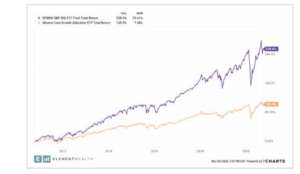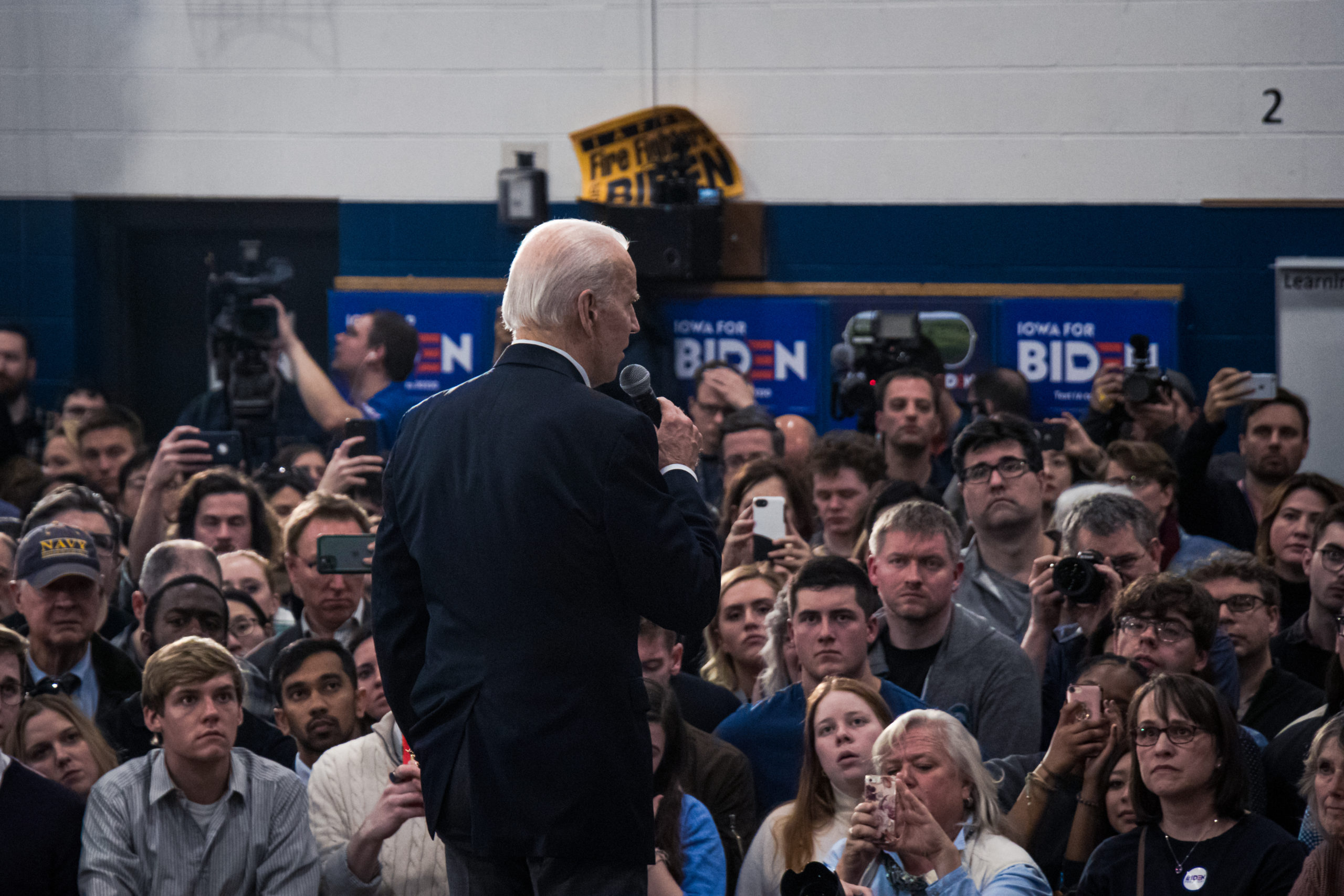ELECTION RECAP AND A GLIMPSE INTO 2021
November 3rd has passed. However, we still do not have a completely clear picture of what to expect out of Washington in 2021. As of this writing, President Trump has not conceded the election and continues to challenge the results in key swing states. Thus far, his legal team has not been successful, and we are moving ever closer to the certification of election results. At this point we believe former Vice President Biden will be inaugurated on January 20th.
Polls generally shifted in President Trump’s favor over the final week before the election. Below are the Real Clear Politics averages for a few key swing states, beginning a week before the election through the final election results.
Averaging the polls out proved to be moderately better in 2020 compared to 2016, but there were some significant misses.
President Trump easily won Florida where he was down slightly.
In Michigan, election results proved to be much closer than thought, although it should be noted that the polls tightened significantly over the final week. Wisconsin election results were outside the margin of error, proving to be 6.0% of. Georgia and Arizona showed a tight race in the polls and the eventual margins were razor thin. Within the six states listed above, only one poll was within 0.5% of the actual results, the NBC News/Marist final poll in Arizona showed a tie. This is the reason why we never believe a single poll. We should use the average of the polls, and even then, take them with a grain of salt.
As an aside, our belief that Vice President Biden will be inaugurated is not a refection of my views, or our firm’s views, on the validity, or lack of validity, on the claims of election fraud that are currently playing out in the courts and the media. We simply believe that it is the most likely outcome.

Whats Next?
In our Fall Newsletter, I ended my commentary by saying, “Assuming a Biden victory, which is no guarantee, it appears that what happens down ballot in the Senate could be the bigger story as it would either give the Democrats full reign or maintain the checks and balances of a divided government.” With two runoff elections in Georgia on January 5th, the fate of the Senate is up for grabs. Republicans currently have a 50-48 seat advantage. If they can hold at least one seat, they can effectively block any major legislative changes. If they do not, the presumable Vice President-Elect, Kamala Harris, would have any tie-breaker vote. Polls are currently close in both races, so we are keenly awaiting the results.
At this point we believe the market is expecting a divided Congress. If it begins to look like that will not be the case, we expect a minor sell-of in the equity markets. But the story for the next couple of months will be COVID-19. Equity markets rallied into and through the initial days after the election. Then on Monday, November 9th, Pfizer released early analysis showing its COVID-19 vaccine is more than 90% effective. Moderna released similar results a few days later. With the Presidential election behind us and COVID-19 vaccines just around the corner, investor optimism has risen. But has the market come too far too fast?
Case counts are rising at an alarming rate. Fortunately, COVID-19 related deaths are not rising at the same rate. This is due to a better understanding of how to treat the virus and a higher percentage of lower-risk individuals contracting it. With vaccines on the horizon, there is some light at the end of the tunnel; however, the risk of increased prevention measures, such as limitations on businesses or lockdowns in extreme cases, is rising. Ultimately, the virus situation will get worse before it will get better.
“It’s not how much we give but how much love we put into giving.”
-Mother Theresa
PRESIDENTIAL TRIVIA
Barry Smith, Partner
I have voted in 11 presidential elections. I had an actual opinion about who I was voting for in the last seven or eight, but I’ve voted in 11. There’s always a winner and a loser under our imperfect but wonderful system of government. Ideologically, over the years I’ve been on both sides of the fence from a Republican/Democrat standpoint. My guess is that’s not uncommon.
Having said that, I’m a little concerned about the age of the people running for president on both sides in the last couple of elections. Until 2016, the oldest elected president was Ronald Reagan at 69. I remember thinking, man that’s old. Well, Trump trumped that by being 70 at his 2016 inauguration. As I write this, I don’t know who won the election, but either way the age trend will continue. Reagan’s record stood for 35 years; Trump’s may end at four years. That got me curious about our former presidents. Anything I learned about this in school has been long forgotten, so this is all compliments of Google.
I learned that the average age of our presidents when elected is approximately 55 years, but the fascinating thing to me is their longevity. Excluding those who were assassinated (which I will do going forward), the average life span of all deceased
presidents is 74 years. The oldest was George H. W. Bush, who we lost in November of 2018 at the age of 94. That record has already been broken by Jimmy Carter, who is having health issues (but at age 96, who wouldn’t have issues?)
You would logically think that early presidents would have had a much shorter life span than the later ones as medical science gets continually better. Once again, excluding the four assassinations and fve living presidents, the group from George Washington to Rutherford Hayes lived to be 73 on average. The group from Chester Arthur (who?) to George H. W. Bush averaged 74.
More amazing to me is the fact that the frst fve presidents had an average lifespan of 80. This was in the late 1700s to early 1800s. This was before penicillin, anesthesia and an understanding of germs and disease. In fact, the youngest of the group to die was George Washington at 67. Washington died of something called quinsy, which is apparently a really bad sore throat. Extending the list a little further, the frst 15 presidents averaged 74 years. For context, the life expectancy for this demographic in the United States in 1850 was 37; in 1900 it was 46; in 1932 it was 61, and at present it’s 76.

For those worried about what the post-election future will bring, let me ofer the wisdom of Warren Bufett, “Never bet against America…”.
I think I’ll end on that note.
LOWER RETURNS FORECASTED
Danny Williams, CFP®
A balanced portfolio is an investment portfolio consisting of approximately 60 percent equities or stocks and 40% fixed-income or bonds. This has been and continues to be a popular portfolio for many different types of investors, but it is mostly geared towards those that are nearing retirement or already in their retirement years. Since it has a mix of both stocks and bonds, it gets a portion of the market returns without all the downward volatility of being fully exposed to stocks.
I have heard numerous industry sources predict significantly less average returns over the next 10 years compared to past average returns. Morgan Stanley forecasts a 2.8% average annual return over the next 10 years for a 60/40 portfolio. The average has been nearly 8.0% since 1881 and about 6% over the last 20 years, alter double-digit annual returns reaching as high as 16% from the early 1980s to the early 2000s. Bob Rice, the chief investment strategist for Tangent Capital, predicted that a 60/40 portfolio was only projected to grow by a rate of 2.2% per year in the coming years.
Some of the reasons cited for potentially lower returns are:
- High equity valuations
- Monetary policy
- Increased risk in bond funds
- Low commodity market prices
 According to multiple sources, investors should brace for a reversion to the mean in stock market returns since the past 10-year bull market has produced gains well above historical averages. This chart compares the S&P 500 ETF with the IShare Core Growth Allocation ETF portfolio (60/40).
According to multiple sources, investors should brace for a reversion to the mean in stock market returns since the past 10-year bull market has produced gains well above historical averages. This chart compares the S&P 500 ETF with the IShare Core Growth Allocation ETF portfolio (60/40).
One of the names you may be familiar with in our industry is the Nobel Laureate economist at Yale University, Robert Shiller. He created the CAPE ratio or the Shiller P/E ratio, which is a valuation measure that uses real earnings per share over a
10-year period to smooth out fluctuations in corporate profits. Another economist, Stephen Jones, using the Shiller ratio, predicted the average annual real total return for the S&P 500 will be 2.6% over the next 10 years. Take note that this is a 100% stock portfolio prediction.
On the other hand, Shiller’s critics, such as Rob Arnott of Research Associates, offer reasons why the results should be on the uptrend, including the maturation of the U.S. economy and more stringent financial reporting standards.
Whenever people start making predictions, which always happens in our industry around the end of the year, I think about one of baseball’s all-time greats, Yogi Berra. One of his famous quotes is, “It’s tough to make predictions, especially about the future.”
Truer words have never been spoken.
We have been utilizing a few alternative investment solutions and are considering others for possibilities as we prepare for an even more challenging investment environment.
Here are a few alternatives that may help to increase returns over a more traditionally invested portfolio:
- Private equity
- Venture capital
- Hedge funds
- Real estate
- Commodities
- Managed futures
- Precious metals
- Cryptocurrency
- Tax liens
Some of these may be a good addition to your portfolio, but each comes with a cost, usually more than traditional investments, and a varying degree of risk. Within each of these alternatives, there may be numerous sub-categories and management styles that should be considered within the context of the overall portfolio mix. Generally, industry professionals usually recommend a small percentage of the total investments.
Some of these alternative ideas may be appropriate for your portfolio. If you would like to have a more comprehensive discussion about portfolio diversification, please feel free to reach out to us via email or telephone.

